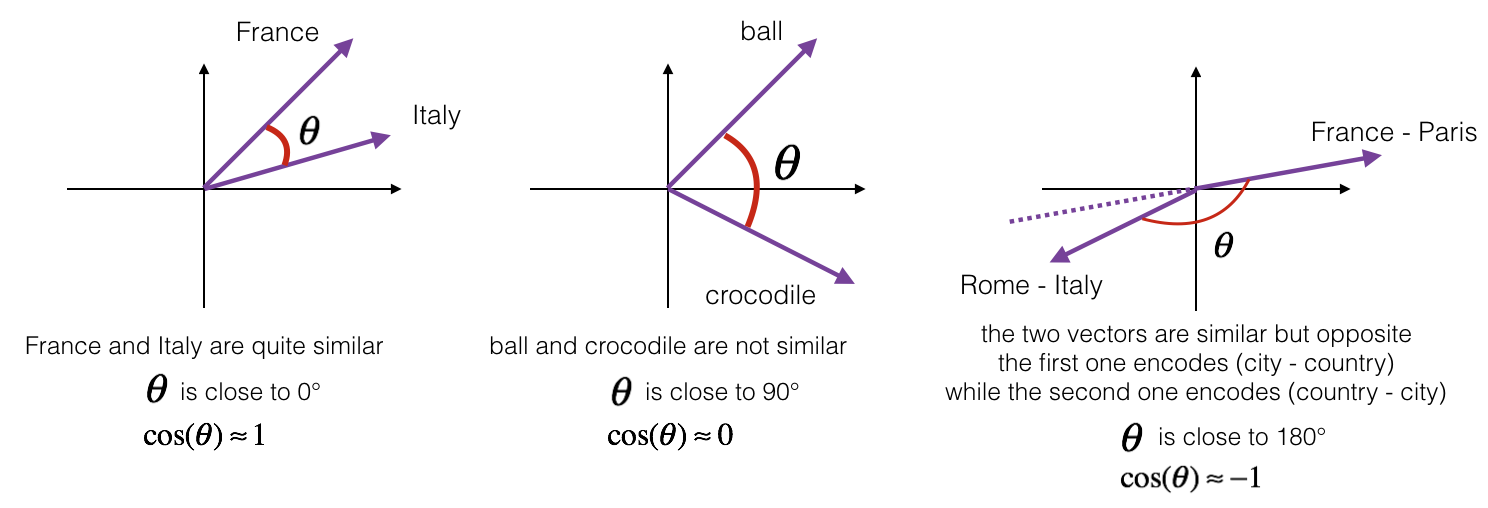1 - Cosine similarity¶
To measure the similarity between two words, we need a way to measure the degree of similarity between two embedding vectors for the two words. Given two vectors $u$ and $v$, cosine similarity is defined as follows:
$$\text{CosineSimilarity(u, v)} = \frac {u \cdot v} {||u||_2 ||v||_2} = cos(\theta) \tag{1}$$- $u \cdot v$ is the dot product (or inner product) of two vectors
- $||u||_2$ is the norm (or length) of the vector $u$
- $\theta$ is the angle between $u$ and $v$.
- The cosine similarity depends on the angle between $u$ and $v$.
- If $u$ and $v$ are very similar, their cosine similarity will be close to 1.
- If they are dissimilar, the cosine similarity will take a smaller value.

Exercise: Implement the function cosine_similarity() to evaluate the similarity between word vectors.
Reminder: The norm of $u$ is defined as $ ||u||_2 = \sqrt{\sum_{i=1}^{n} u_i^2}$
Additional Hints¶
- You may find
np.dot,np.sum, ornp.sqrtuseful depending upon the implementation that you choose.

